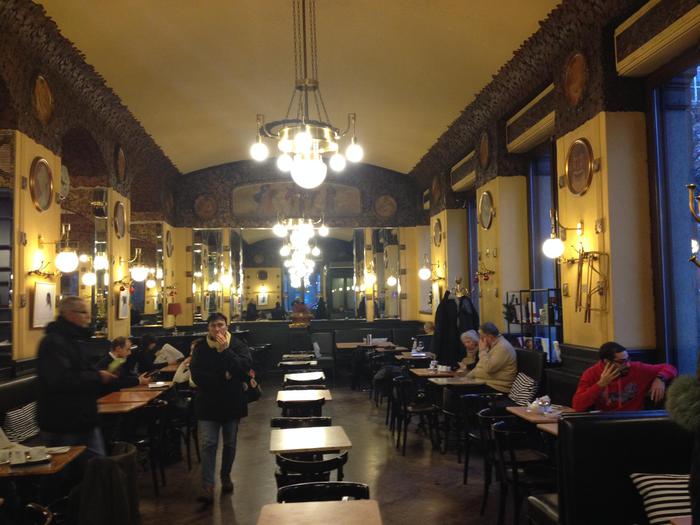Farther from the sea and more secluded than the famous Piazza Unità, the San Marco café, which turns 110 this year, embodies the somewhat contradictory essence of Trieste: a city at the same time nostalgic for the Habsburg glories, proudly different from rest of the country but a symbol of the unity of Italy.
Opened in 1914 as a meeting place for irredentists, now it is a sort of relic of that Austro-Hungarian world against which the original owner fought.
If only just over a decade ago it was experiencing a moment of decline and it was feared it might even close, in recent years the historic "San Marco" has regained a central position in the daily life of the city, first in culture and then in restaurants.
Thanks also to the intuition of the current owners (the property belongs to Generali), a bookshop has opened inside, cultural events are held and the attraction it once had on writers and intellectuals has been added to the attraction for tourists and ordinary citizens.
Entering the elegant venue, it feels like entering a Viennese literary café: this is suggested by the large mirrors, the marble tables, the dark wood of the counter and the furnishings, the decorations with golden accents that recall Secessionism.
Yet the café - as the nod to Venice in its name suggests - was founded by an Istrian with irredentist aspirations, Marco Lovrinovich, and became a meeting place for those who wanted the city to become part of Italy.
So much so that in 1915 demonstrators loyal to the empire set a fire there to take revenge for Italy's entry into the war against its allies and Lovrinovich was arrested in Ljubljana.
The café was later rebuilt, and has remained essentially identical ever since, with some restoration work in the 1930s, and then in 1989 which did little to alter its image.
Caffè San Marco has therefore remained unchanged through the troubled history of the twentieth century, which saw Trieste as the protagonist of many transformations: from fascism which made it the scene of the proclamation of the racial laws in 1938, to the particular post-war structure after the Second World War, in where the city remained a buffer zone and then during the Cold War one of the two ends of the Iron Curtain, which separated the Western bloc from the communist one.
And behind its doors writers and intellectuals from Trieste such as Tullio Kezich, Fulvio Tomizza and Claudio Magris (the San Marco is known as his "office") have always found a safe haven where they can spend the hours reading and writing while sipping a black or drinking a spritz and tasting a sacher, a presnitz or a rigojanci.
Because here the Central European spirit does not survive but remains.
Reproduction reserved © Copyright ANSA

